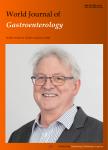Obstructive jaundice due to hepatobiliary cystadenoma or cystadenocarcinoma
Obstructive jaundice due to hepatobiliary cystadenoma or cystadenocarcinoma作者机构:Department of Surgery Academic Medical Center University of Amsterdam The Netherlands Department of Hepatology Academic Medical Center University of Amsterdam The Netherlands Department of Surgery Radiology Academic Medical Center University of Amsterdam The Netherlands
出 版 物:《World Journal of Gastroenterology》 (世界胃肠病学杂志(英文版))
年 卷 期:2006年第12卷第35期
页 面:5735-5738页
核心收录:
学科分类:1002[医学-临床医学] 100214[医学-肿瘤学] 10[医学]
主 题:Liver Hepatobiliary cystadenoma Cystadenocarcinoma Obstructive jaundice Endoscopic retrograde cholangiopancreatography
摘 要:Hepatobiliary cystadenomas (HBC) and cystadenocarci- nomas are rare cystic lesions. Most patients with these lesions are asymptomatic, but presentation with ob- structive jaundice may occur. The first patient presented with intermittent colicky pain and recurrent obstructive jaundice. Imaging studies revealed a polypoid lesion in the left hepatic duct. The second patient had recurrent jaundice and cholangitis. Endoscopic retrograde cholan- giopancreatography (ERCP) showed a cystic lesion at the confluence of the hepatic duct. In the third patient with intermittent jaundice and cholangitis, cholangioscopy re- vealed a papillomatous structure protruding into the left bile duct system. In the fourth patient with obstructive jaundice, CT-scan showed slight dilatation of the intrahe- patic bile ducts and dilatation of the common bile duct of 3 cm. ERCP showed filling of a cystic lesion. All patients underwent partial liver resection, revealing HBC in the specimen. In the fifth patient presenting with obstructive jaundice, ultrasound examination showed a hyperecho- genic cystic lesion centrally in the liver. The resection specimen revealed a hepatobiliary cystadenocarcinoma. HBC and cystadenocarcinoma may give rise to obstruc- tive jaundice. Evaluation with cross-sectional imaging techniques is useful. ERCP is a useful tool to differentiate extraductal from intraductal obstruction.



